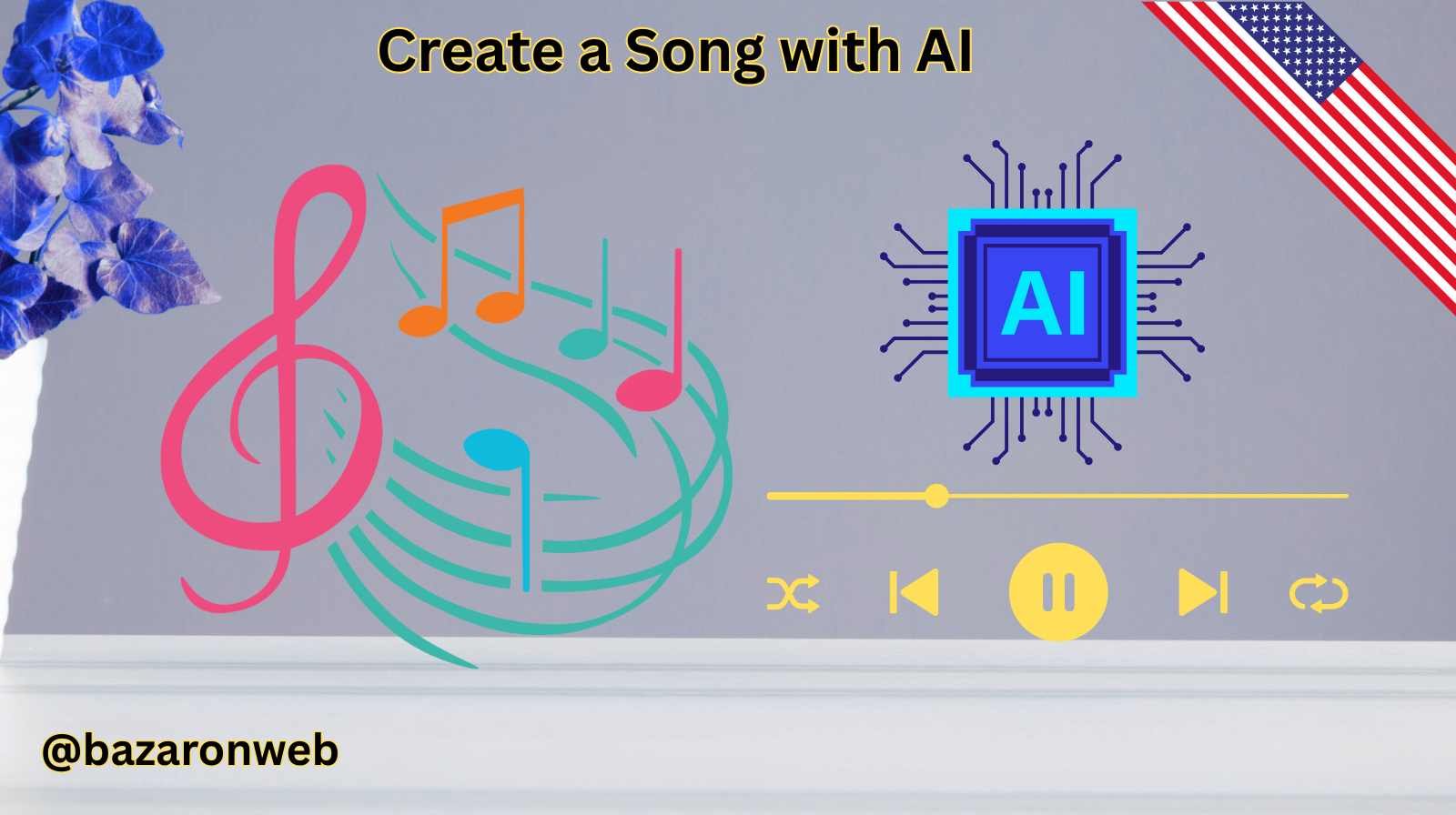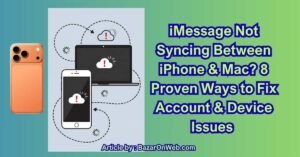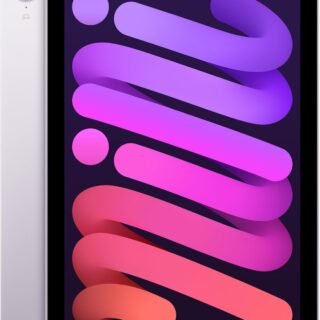Category
Popular Articles
- AI (12)
- Android (38)
- App Suggest (4)
- Apple (15)
- Apple TV (2)
- Bluetooth (3)
- Cars (2)
- ChatGpt (1)
- Chrome (2)
- Did you know? (1)
- E-Commerce News (1)
- Ecommerce Websites business (7)
- Electronics Shopping (5)
- Fashion Tips (3)
- Gaming (4)
- Google Gemini (3)
- Hair Care Tips (2)
- How to (13)
- iCloud (1)
- Infotainment System (1)
- Iphone (101)
- Job Posting (1)
- Lifestyle (3)
- Mac (20)
- Mobile Games (1)
- Netflix (1)
- Online Shopping Websites (2)
- Personal Finance Management (3)
- Product Reviews (3)
- Roku TV (4)
- Samsung (9)
- Shopping Tips (10)
- Spotify (1)
- Tech (92)
- Windows 11 (18)
- Zero Waste (3)
Discounted Products
-
 Leo Creation 144 TC Cotton Double Jaipuri Prints Flat Bedsheet(Pack of 1, Blue, Gree, Red, Grey, Light Grey)
Leo Creation 144 TC Cotton Double Jaipuri Prints Flat Bedsheet(Pack of 1, Blue, Gree, Red, Grey, Light Grey)
₹2,999.00Original price was: ₹2,999.00.₹329.00Current price is: ₹329.00. -
 Home Garage 210 TC Cotton King Floral Fitted (Elastic) Bedsheet(Pack of 1, Grey)
Home Garage 210 TC Cotton King Floral Fitted (Elastic) Bedsheet(Pack of 1, Grey)
₹999.00Original price was: ₹999.00.₹299.00Current price is: ₹299.00. -
 Goodrik 140 TC Cotton Double 3D Printed Flat Bedsheet(Pack of 1, Brown)
Goodrik 140 TC Cotton Double 3D Printed Flat Bedsheet(Pack of 1, Brown)
₹499.00Original price was: ₹499.00.₹229.00Current price is: ₹229.00. -
 GLOBALSHOP 350 TC Microfiber Double Floral Flat Bedsheet(Pack of 1, Multicolor)
GLOBALSHOP 350 TC Microfiber Double Floral Flat Bedsheet(Pack of 1, Multicolor)
₹1,250.00Original price was: ₹1,250.00.₹263.00Current price is: ₹263.00. -
 RisingStar 250 TC Microfiber King Printed Fitted (Elastic) Bedsheet(Pack of 1, FITTED-ROUND-CIRCLES-PREMIUM)
RisingStar 250 TC Microfiber King Printed Fitted (Elastic) Bedsheet(Pack of 1, FITTED-ROUND-CIRCLES-PREMIUM)
₹2,299.00Original price was: ₹2,299.00.₹299.00Current price is: ₹299.00. -
 Home Garage 210 TC Cotton King Floral Fitted (Elastic) Bedsheet(Pack of 1, Fitted Black Green)
Home Garage 210 TC Cotton King Floral Fitted (Elastic) Bedsheet(Pack of 1, Fitted Black Green)
₹1,299.00Original price was: ₹1,299.00.₹299.00Current price is: ₹299.00. -
 Home Garage 180 TC Cotton King 3D Printed Flat Bedsheet(Pack of 1, White)
Home Garage 180 TC Cotton King 3D Printed Flat Bedsheet(Pack of 1, White)
₹999.00Original price was: ₹999.00.₹229.00Current price is: ₹229.00. -
 Home Sizzler 153 cm (5 ft) Polyester Room Darkening Window Curtain (Pack Of 2)(Floral, Maroon)
Home Sizzler 153 cm (5 ft) Polyester Room Darkening Window Curtain (Pack Of 2)(Floral, Maroon)
₹799.00Original price was: ₹799.00.₹299.00Current price is: ₹299.00. -
 Panipat Textile Hub 152.4 cm (5 ft) Polyester Window Curtain (Pack Of 2)(Solid, Aqua)
Panipat Textile Hub 152.4 cm (5 ft) Polyester Window Curtain (Pack Of 2)(Solid, Aqua)
₹1,899.00Original price was: ₹1,899.00.₹299.00Current price is: ₹299.00. -
 Home Sizzler 214 cm (7 ft) Polyester Semi Transparent Door Curtain (Pack Of 2)(Floral, Maroon)
Home Sizzler 214 cm (7 ft) Polyester Semi Transparent Door Curtain (Pack Of 2)(Floral, Maroon)
₹1,199.00Original price was: ₹1,199.00.₹399.00Current price is: ₹399.00. -
 Home Sizzler 153 cm (5 ft) Polyester Room Darkening Window Curtain (Pack Of 2)(Floral, Brown)
Home Sizzler 153 cm (5 ft) Polyester Room Darkening Window Curtain (Pack Of 2)(Floral, Brown)
₹799.00Original price was: ₹799.00.₹299.00Current price is: ₹299.00. -
 Stella Creations 214 cm (7 ft) Polyester Room Darkening Door Curtain (Pack Of 2)(Abstract, Brown)
Stella Creations 214 cm (7 ft) Polyester Room Darkening Door Curtain (Pack Of 2)(Abstract, Brown)
₹1,299.00Original price was: ₹1,299.00.₹449.00Current price is: ₹449.00. -
 Homefab India 152.5 cm (5 ft) Polyester Room Darkening Window Curtain (Pack Of 2)(Floral, Light Blue)
Homefab India 152.5 cm (5 ft) Polyester Room Darkening Window Curtain (Pack Of 2)(Floral, Light Blue)
₹1,199.00Original price was: ₹1,199.00.₹319.00Current price is: ₹319.00. -
 Urban Home 214 cm (7 ft) PVC Transparent Door Curtain Single Curtain(Solid, Off White)
Urban Home 214 cm (7 ft) PVC Transparent Door Curtain Single Curtain(Solid, Off White)
₹699.00Original price was: ₹699.00.₹203.00Current price is: ₹203.00. -
 Panipat Textile Hub 213 cm (7 ft) Polyester Door Curtain (Pack Of 2)(Solid, Brown)
Panipat Textile Hub 213 cm (7 ft) Polyester Door Curtain (Pack Of 2)(Solid, Brown)
₹1,199.00Original price was: ₹1,199.00.₹349.00Current price is: ₹349.00.
Affiliate Links
Promotion

Hi friends, Jessica here — your resident multitasking mom who somehow manages bedtime stories, grocery lists, and the occasional creative detour into songwriting. Creating a song with AI is one of my new favorite ways to have fun, learn something new, and get a quick creative win without needing years of music-school training. Whether you want a quirky jingle for a family video, a heartfelt lullaby, or just a silly party anthem, AI can help you from idea to finished track. Here’s a friendly step-by-step guide to make a song using AI — zero judged, maximum joy.
1) Start with an idea (5–10 minutes)
Everything great starts with a little spark. Decide what kind of song you want:
- Mood: upbeat, chill, dramatic, dreamy?
- Genre: pop, folk, electronic, hip-hop, country?
- Purpose: background for a video, a gift, a demo?
Write a one-sentence concept. Example: “A cozy acoustic lullaby about bedtime adventures” or “A bouncy 30-second family jingle celebrating weekend pancakes.”
This tiny bit of planning will make tool choices and prompts much easier.
2) Choose your AI toolbox (5–15 minutes)
You don’t need all the gear — pick a small set of tools that work together:
- Lyric generator: an AI that writes song lyrics from prompts.
- Melody/chord generator: a tool that suggests chord progressions and melodies.
- AI instrument / beat maker: to produce backing tracks and instrument layers.
- Vocal option: either record your own voice or use an AI singing generator (text-to-singing).
- Simple DAW (digital audio workstation): a place to assemble, edit and export your song (GarageBand, Audacity, or any free/basic DAW).
You can use free tools for most steps or upgrade to paid services for higher fidelity later. The point is to start small and iterate.
3) Generate lyrics — and make them yours (15–30 minutes)
Open your lyric generator and feed it a short prompt based on your idea. Example prompt:
“Write a simple 16-line lullaby about a child traveling through a cozy starry forest. Gentle, rhyming couplets, chorus with ‘goodnight’ line.”
Tips for great results:
- Be specific with mood, rhyme scheme, and length.
- Ask for multiple versions and pick lines you love.
- Mix and match lines from different outputs to create a custom verse/chorus.
- Edit: tweak words to make it personal (names, places, family jokes).
If you prefer hands-on writing, use AI suggestions as starter lines — I often keep one strong AI line and write the rest in my voice.
4) Build a chord progression and melody (20–40 minutes)
Now make music that fits your lyrics:
- Use an AI melody generator or chord tool to suggest a progression (e.g., C – G – Am – F for a warm pop feel).
- If you play piano or guitar, try the progression and hum or sing melodies until you find a hook.
- If you don’t play, feed the chord progression into an AI melody tool and ask for multiple melodic ideas for verse and chorus.
Record short melodic motifs — even on your phone — to capture inspiration. AI can refine those motifs into polished MIDI that you import into your DAW.
5) Create the instrumental backing (30–60 minutes)
Choose the vibe: acoustic guitar, synth pad, lo-fi beat, orchestral stabs. Then:
- Use an AI instrument or beat maker to lay down drums, bass, chords, and texture layers.
- Keep it simple at first: rhythm + harmony + one lead instrument.
- Arrange the structure: intro, verse, chorus, bridge, outro. Aim for 2–3 minutes for a tidy song or 30–60 seconds for a jingle.
Layering tip: start sparse (verse) and add more elements (chorus) so the song breathes.
6) Add vocals — your voice or AI singing (20–40 minutes)
You have two main paths:
Record your own vocals
- Use a quiet room and your phone or a USB mic.
- Sing a few takes for each line; pick the best and comp them together.
- Don’t worry about perfection — emotion connects more than polish.
Use AI singing
- Convert your lyrics to a singing prompt and choose a voice style (male/female, expressive, robotic).
- Many AI singing tools let you control pitch, vibrato, and phrasing.
- Edit pronunciation and timing — AI may need fine-tuning to sound natural.
Hybrid approach: use AI to demo a melody and sing your final performance over it.
7) Assemble and edit in your DAW (30–90 minutes)
Import your instrumental, vocal tracks, and any MIDI. Tasks to do:
- Align vocals to grid/timing.
- Trim dead air and take out pops.
- Adjust volume so vocals sit above the instrumental.
- Add simple effects: reverb for space, EQ to clean frequencies, light compression for consistency.
If you’re new to mixing, use presets (vocal reverb, acoustic guitar preset) — they’ll get you surprisingly far. The goal is clarity, not pro mastering.
8) Mix and master (30–60 minutes)
Mixing brings everything together; mastering polishes the final stereo file.
- Balance levels: make sure instruments don’t drown the vocal.
- Stereo imaging: widen or keep elements centered for a full sound.
- Master: apply light compression and a limiter so the track sounds loud and even.
You can learn basic mixing with online tutorials. Or use AI mastering services that take your mix and optimize loudness and EQ with one click.
9) Iterate and get feedback (15–60 minutes)
Show your rough cut to a friend, partner, or a kid for honest reactions. Questions to ask:
- Does it hold interest for the whole length?
- Is the chorus memorable?
- Any awkward words or timing issues?
Use feedback to tweak lyrics, rearrange sections, or add a hook. Creativity thrives on iteration — don’t be afraid to rework.
10) Have fun with collabs, remixes, and visuals (optional)
Once you have a base song:
- Invite friends or family to add backing vocals or beats remotely.
- Make a remix: strip vocals, change tempo, or make an instrumental cut.
- Create a simple lyric video or phone-shot music video — kids love being in the clip!
Sharing the process is half the joy. I often turn family songs into small music videos and make the kids laugh.
11) Export, share, and protect (10–20 minutes)
Export a high-quality WAV for archiving and an MP3 for sharing. If you plan to publish:
- Add metadata (title, artist name, year).
- Consider licensing if you used third-party samples—check usage rights.
- For social sharing, make short teaser clips for Reels or TikTok.
If you want to monetize later, register your song with a performance rights organization (PRO) and consider distributing through platforms that handle royalties.
12) Keep it ethical and fun
A couple of quick reminders:
- Use royalty-free sounds or ensure licenses are clear for commercial use.
- If you use AI voices that imitate living artists, check terms and respect creators.
- Credit contributors (even small favors) — it’s good community practice.
Quick tips to stay playful
- Set a timer: 90-minute micro-song sprint. You’ll be amazed at what you finish.
- Make constraints: only three chords, 16 lines max — limits spark creativity.
- Turn imperfections into charm — sometimes the slightly off note is the hook.
- Have themed nights: “80s synth night” or “bedtime lullaby hour” with friends/family.
Final thoughts
Making a song with AI is less about replacing artists and more about lowering the barrier to entry: anyone can make music now. It’s a delightful mix of technology and human choice — your edits, your voice, and your heart are what make the song meaningful. Start with a small idea, lean on AI for structure and suggestions, and inject personality with your edits and performance. Most of all—have fun. If my kids can sing along by the second chorus, I know I’ve succeeded.
Written by Bazaronweb
Latest Tech Articles
- 5 Ways to Backup and Restore Registry Settings in Windows

- iMessage Not Syncing Between iPhone & Mac? 8 Proven Ways to Fix Account & Device Issues

- Outlook Not Receiving Emails? 8 Proven Fixes for Windows, Mac & Mobile

- Zoom Not Connecting? 7 Ways to Fix Meeting Join Errors on Windows & Mac

- Microsoft Teams Not Opening? 5 Proven Fixes to Restart Your Workspace

Products
-
![Apple Watch Ultra 3 [GPS + Cellular 49mm] Running & Multisport Smartwatch w/Rugged Titanium Case w/Black Titanium Milanese Loop - M. Satellite Communications, Advanced Health & Fitness Tracking](https://bazaronweb.com/retailstores/wp-content/uploads/2025/09/apple-watch-320x320.jpg) Apple Watch Ultra 3 [GPS + Cellular 49mm] Running & Multisport Smartwatch w/Rugged Titanium Case w/Black Titanium Milanese Loop - M. Satellite Communications, Advanced Health & Fitness Tracking
Apple Watch Ultra 3 [GPS + Cellular 49mm] Running & Multisport Smartwatch w/Rugged Titanium Case w/Black Titanium Milanese Loop - M. Satellite Communications, Advanced Health & Fitness Tracking
-
 Apple iPad mini (A17 Pro): Apple Intelligence, 8.3-inch Liquid Retina Display, 256GB, Wi-Fi 6E, 12MP Front/12MP Back Camera, Touch ID, All-Day Battery Life — Purple
Apple iPad mini (A17 Pro): Apple Intelligence, 8.3-inch Liquid Retina Display, 256GB, Wi-Fi 6E, 12MP Front/12MP Back Camera, Touch ID, All-Day Battery Life — Purple
-
 Apple AirPods Max Wireless Over-Ear Headphones, Active Noise Cancelling, Transparency Mode, Personalized Spatial Audio, Dolby Atmos, Bluetooth Headphones for iPhone – Space Gray
Apple AirPods Max Wireless Over-Ear Headphones, Active Noise Cancelling, Transparency Mode, Personalized Spatial Audio, Dolby Atmos, Bluetooth Headphones for iPhone – Space Gray
-
 Apple AirPods Pro 2 Wireless Earbuds, Active Noise Cancellation, Hearing Aid Feature, Bluetooth Headphones, Transparency, Personalized Spatial Audio, High-Fidelity Sound, H2 Chip, USB-C Charging
Apple AirPods Pro 2 Wireless Earbuds, Active Noise Cancellation, Hearing Aid Feature, Bluetooth Headphones, Transparency, Personalized Spatial Audio, High-Fidelity Sound, H2 Chip, USB-C Charging
-
 Leo Creation 144 TC Cotton Double Jaipuri Prints Flat Bedsheet(Pack of 1, Blue, Gree, Red, Grey, Light Grey)
Leo Creation 144 TC Cotton Double Jaipuri Prints Flat Bedsheet(Pack of 1, Blue, Gree, Red, Grey, Light Grey)
₹2,999.00Original price was: ₹2,999.00.₹329.00Current price is: ₹329.00.
Leave a Reply